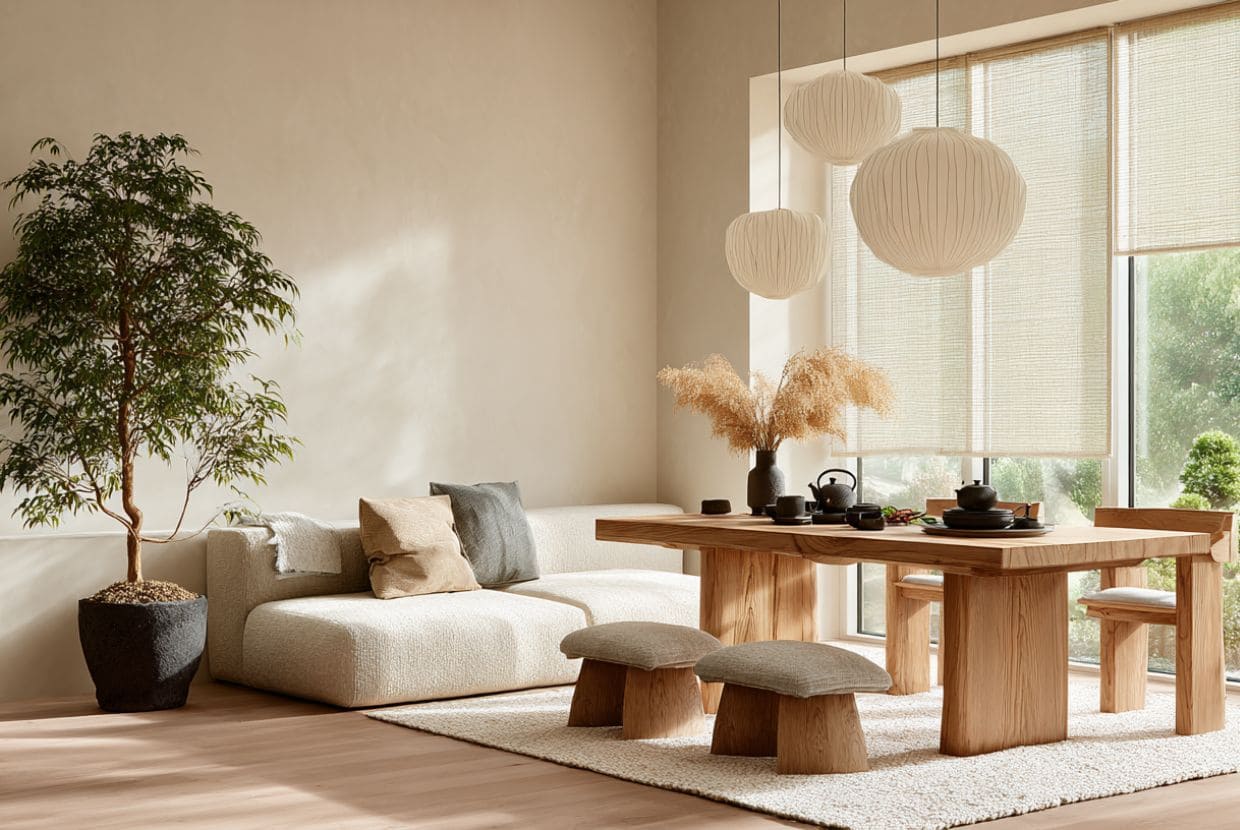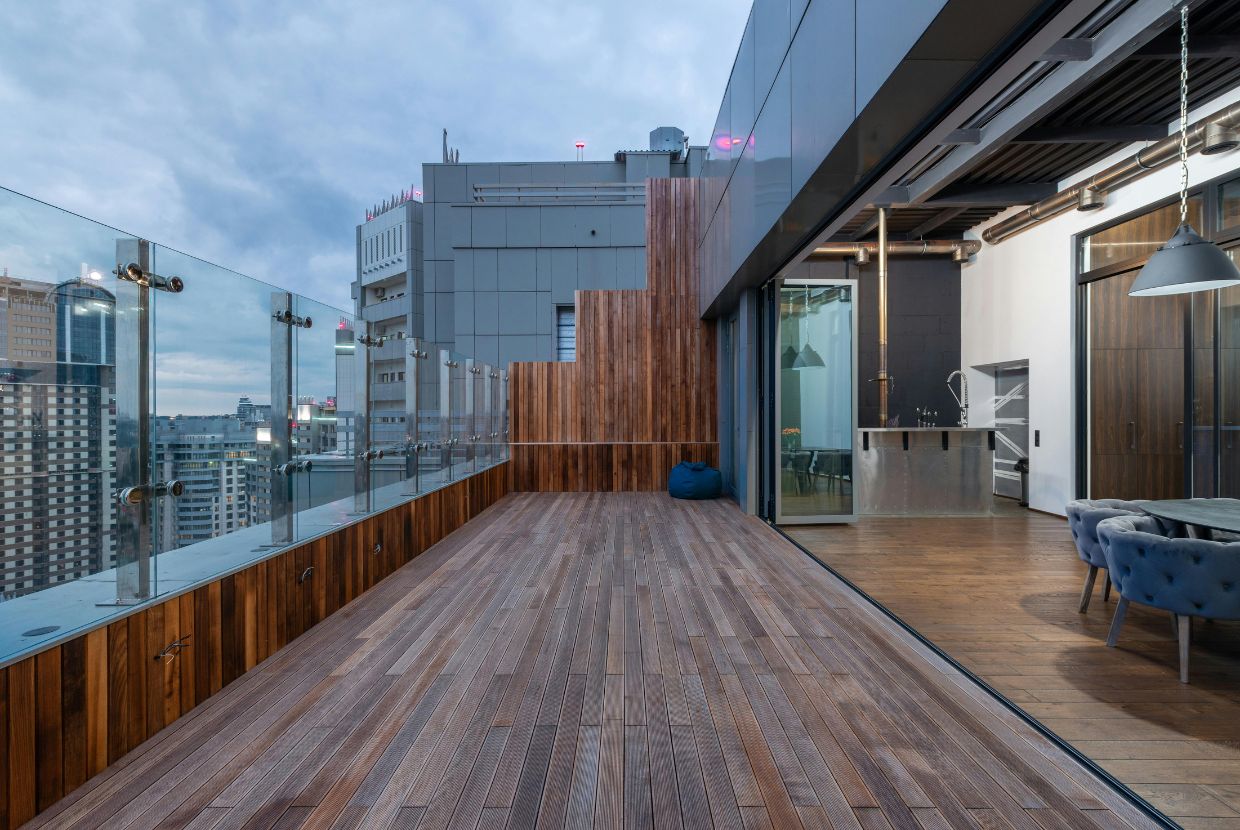There's something about the Japandi style that has quietly earned its place at the heart of interior design. It combines the serene calm of Japanese minimalism with the practical warmth of Scandinavian style. Two worlds that, although seemingly distant, share a similar vision of how to inhabit a space: with intention, simplicity, and respect for nature.
It's not just an aesthetic; it's a way of being. Of choosing fewer things, but things that truly matter. Of surrounding yourself with objects with soul and creating environments that invite you to breathe deeply.
What defines the Japandi style
When we talk about Japandi style, we're talking about balance. Every piece of furniture, every texture, every color is designed to add without overwhelming. The interiors are constructed from noble materials—wood, stone, linen—and decorated with a calm palette: warm whites, soft grays, beiges, and earth tones. Darker accents, such as charcoal black, help to establish a presence without disrupting the harmony.
Lighting plays a key role. The goal is to let in as much natural light as possible, accompanied by paper lanterns or fabrics that project a soft, enveloping glow. And that connection with the outdoors, with nature, is always present: whether through large windows, clean textures, or subtle plants.
Origins and philosophy
This style didn't emerge out of nowhere. At the end of the 19th century, Japan opened its doors to the world, and a cultural exchange began that also extended to design. Many Scandinavian designers were deeply drawn to Japanese aesthetics: their order, their calm, their focus on the essential.
Over time, this connection became clearer. While wabi-sabi—that way of seeing beauty in the imperfect and the natural—flourished in Japan, hygge, a philosophy centered on everyday well-being, warmth, and comfort, was being talked about in the Nordic countries. The Japandi style was born from this intersection, like a shared language between two cultures that value simplicity, durability, and authenticity.
Essential principles of the Japandi style
There are a number of ideas that shape this characteristic aesthetic:
Minimalism with soul
It's not about emptying the space, but rather giving it a breath of fresh air. Without being cold, but without being excessive.
Natural materials
Wood (oak, ash, bamboo), linen, wool and stone are the main protagonists.
Colors that embrace
Off-whites, soft grays, beige, terracotta... with a touch of dark to break the monotony.
Craftsmanship and longevity
The pieces are not only beautiful, they're also made to last, often by hand.
Light and visual order
Everything contributes to the feeling of calm. The soft light and order are part of the experience.
Nature present
Whether through materials or a garden view, nature always has a place.
How to apply the Japandi style at home
There's no need to tear down walls or start from scratch. What's needed is a change of perspective.
Space debugging
The first step is simple: keep only the essentials. Not on a whim, but so that each object has a reason to be there. Visual order is key, so it's best to opt for hidden storage and clean surfaces.
Color palette
A soft background helps create harmony: warm white, light gray, or beige. Combined with light woods and some dark details, the result is understated yet inviting.
Functional and low furniture
The key pieces feature straight lines, organic shapes, and restrained proportions. In many cases, they are closer to the ground: a direct reference to Japanese style.
Natural textures
This is where warmth comes in. Linen curtains, soft cushions, jute or cotton rugs. All designed to add sensations without overwhelming.
Layered lighting
Light should never be harsh. We aim for warm, enveloping lighting that combines natural elements with lamps made of materials like paper or wood.
Japandi style in different rooms
Lounge
A low sofa, a solid wood table, a few handcrafted objects. That's enough. If you add a hanging paper lantern, the atmosphere becomes even more serene.
Kitchen
Smooth fronts, light or greige wood, stone countertops, and open shelving. All very functional, very clean visually. No unnecessary embellishments.
Bedroom
A low wooden bed, linens, and light curtains. A minimalist artwork or a dried branch can be that unique decorative detail that completes the space.
Bathroom
The secret here is in the materials: natural stone, treated wood, and indirect lighting. And, of course, nothing in sight. Everything used daily is neatly stored away.
Recommended color palette and materials
The Japandi style moves within a soft palette: off-whites, muted grays, beiges, and earth tones. Light wood is almost mandatory, although you can play with walnut touches to add elegance. Black accents help organize the space and give it visual strength without losing warmth.
Among the materials, those that connect with the senses prevail: untreated stone, handmade ceramics, linen, wool, cotton. Everything invites touch, closeness.
Benefits of the Japandi style
Living in a Japandi environment is more than just a beautiful place. It's about inhabiting spaces that nurture:
- The mind: less visual noise, more tranquility.
- The functionality: everything that exists has a meaning.
- Durability: the materials resist the passage of time.
- Sustainability: Priority is given to what is natural, what does not need to be replaced frequently.
Common mistakes when trying the Japandi style
There are some common pitfalls when trying to adopt this style:
- Excess of cold white: Warmth is sought, so earth tones and textures are allies.
- Confusing minimalism with emptiness: It's not about having less, but about having just enough.
- Too much decoration: better one piece with value than many meaningless ones.
- Forget the light: Without adequate lighting, Japandi loses its essence.
Japandi style as a timeless trend
Although it has a recent name, the Japandi style embodies centuries of wisdom about living. It doesn't respond to a fad that comes and goes, but rather to an increasingly present need: to live in peace, surrounded by beauty and meaning.
In a world where everything seems so fast-paced, this proposal reminds us that home can be our refuge. A place where everything is designed to enhance our well-being.
At Tecnic Project, we are Interior Design Specialists in Mallorca
At Tecnic Project, we believe that every home should reflect the way we want to live. Our team understands the value of a design that not only looks good but also feels good. That's why we're inspired by concepts like the Japandi style, which harmonizes beauty, functionality, and calm.
If you're looking to transform your home with a serene and conscious approach, we'd love to help you from our interior design studio in Mallorca, we work closely with each client to create truly enjoyable spaces. Write to us anytime.




